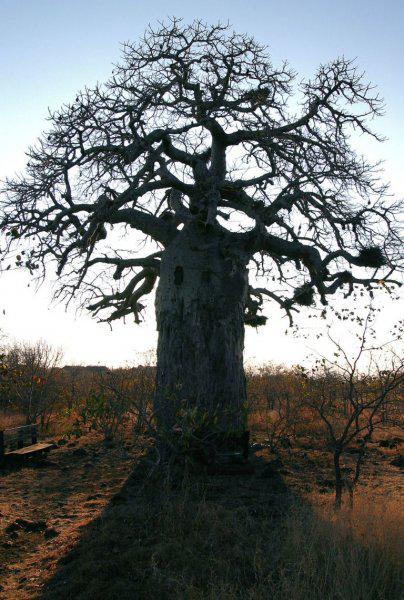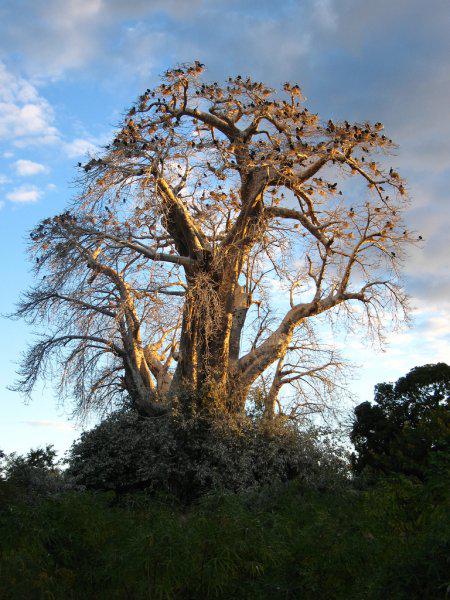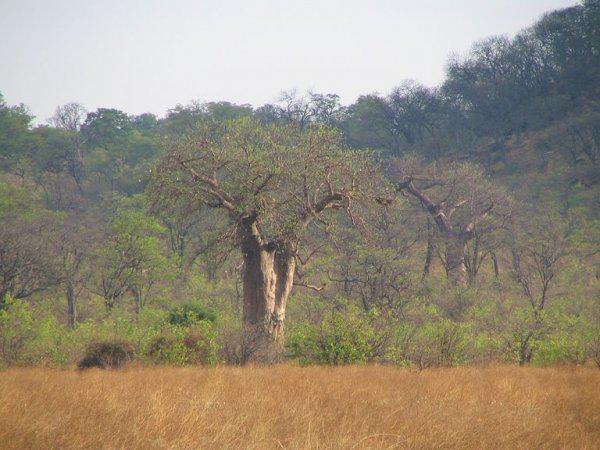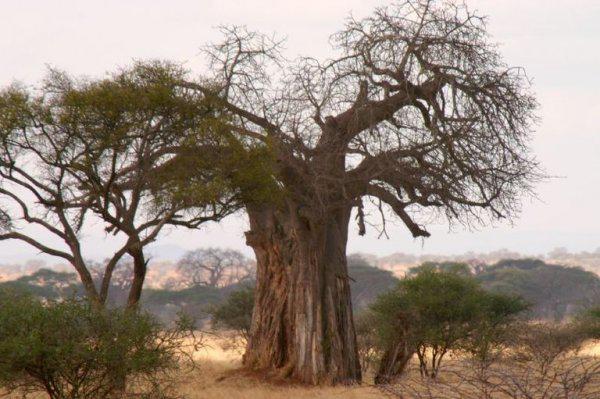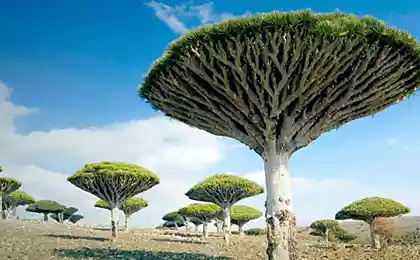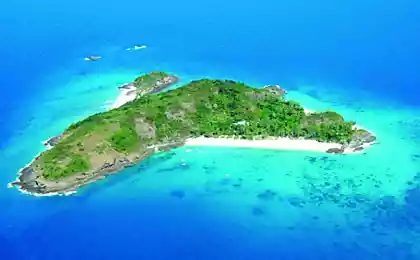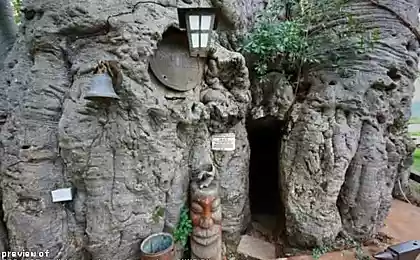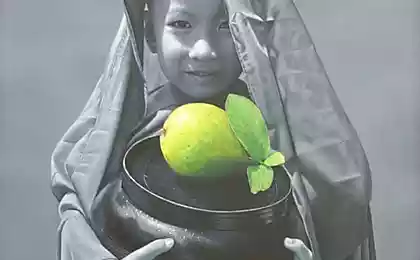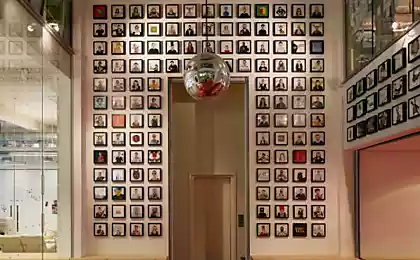952
For those who do not know what Baobab?

Baobab is famous for its unusual proportions. This is one of the thickest trees in the world - with an average circumference of the trunk 9-10 m, its height is only 18-25 m. At the top of the barrel is divided into thick, almost horizontal branches that form a large, up to 38 m in diameter, crown. In the dry season, in the winter, when the baobab tree shed their leaves, he takes on a curious kind of tree roots growing up.
African legend has it that the creator put baobab tree in the valley of the Congo River, but the tree was to complain about the humidity. Then the creator of transplanted it to slope Mountains of the Moon, but here the baobab was not happy. Angered at the constant complaints of the tree, God tore it and threw the dry African soil. Since then, the baobab roots and grows up.
The loose, porous wood baobab tree is able to absorb water during the rainy season, like a sponge, which explains the unusual thickness of the trees - they are, in fact, are a huge water tank. From evaporation of the collected fluid protects the thick, 10 cm, gray-brown bark, too loose and soft - from punching her remains dent; but its inner part fastened strong fibers.
In winter, during the dry season the tree begins to expend reserves of moisture - is reduced in volume, and resets the foliage. From October to December baobab bloom. Flowers baobab large (20 cm), white with five petals and purple stamens, on hanging stalks. They are revealed in the evening, and live only one night, bringing the scent of pollinating bats. In the morning the flowers wilt, acquiring an unpleasant putrid odor, and fall off.
Should develop oblong fruits that resemble cucumber or melon covered with thick hairy skin. Inside the fruit of sour filled powdery pulp with black seeds. The fruits are edible. Because of addiction to them monkeys (baboons) baobab tree called "monkey bread tree».
Soft, supersaturated water baobab wood is exposed to fungal diseases, making the trunks of mature plants are usually hollow, or hollow, inside the Arch. Baobab dies too peculiar: he seemed to crumble and eventually settles, leaving behind only a pile of fiber. However, baobabs are extremely tenacious. They quickly restore flayed the bark; continue to bloom and bear fruit with an empty core; felled or fallen tree is able to let new roots.
Age
Life expectancy is controversial baobabs - they have no annual rings, which can reliably calculate the age. Conducted by radiocarbon analysis (for C14) calculations showed more than 5,500 years for a tree diameter of 4 to 5 m, although more conservative estimates baobabs live "only" 1000 years.
Using
Local residents have been applied almost any part of the baobab tree. From its bark gets tough, strong fiber, reaching for the manufacture of fishing nets, ropes, mats and fabrics. Young leaves are added to salads, used as a dry spices; Nigeria are boiled soup. The fruit pulp that tastes like ginger and rich in vitamins C and B, dried and ground into a powder; divorced in water, it gives a soft drink, a bit like the "lemonade", hence another name baobab - lemonade tree. The roasted seeds are used as a coffee substitute. The hollow trunks of baobabs occupy a temporary dwellings and storehouses, and in some cases specially adapted for water storage tanks. In domestic medicine fruit pulp, juice, leaves and bark are used as a remedy for various fevers and dysentery. Obtained from the bark of the baobab drug similar to quinine. In the mythology of the peoples of many African baobab tree symbolizes life, fertility and appears custodian of the land.
Text: Wikipedia

